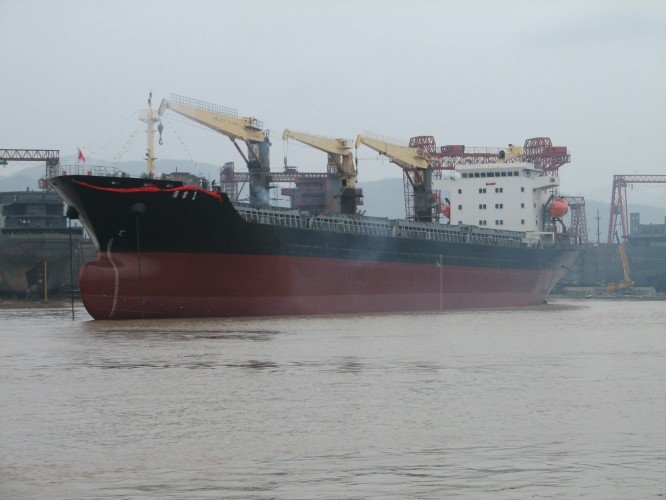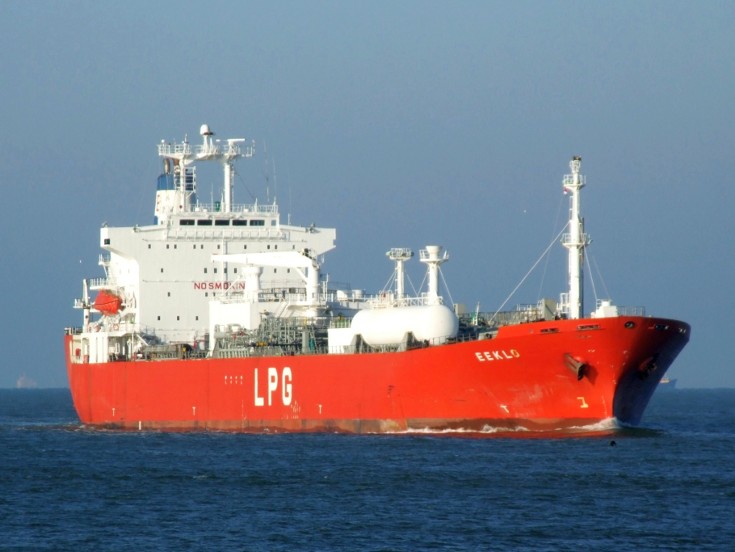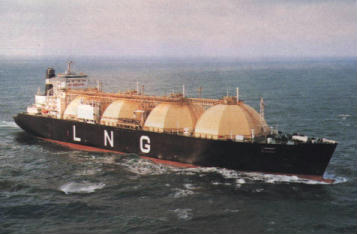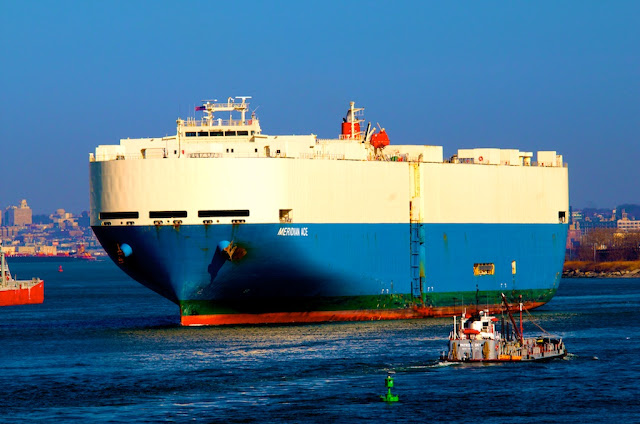June 25, 2011
Shipping law is one of the most niche areas of the legal system. Whilst there is a huge body of law, which is for the most part very complex, there are very few shipping law cases that result in legal proceedings. There are therefore relatively few firms (especially outside the big cities) who can concentrate their entire practice on an area of shipping law or even shipping law as a whole. For this and other reasons the costs of shipping law disputes tend to be towards the higher end of the spectrum.
Indeed, when a case involving shipping law does go to trial it is often found that there has not been a clarification of the law for some time – in the recent case of Global Process Systems v Syarikat Takaful Malaysia Berhad a question arose as to what constituted ‘inherent vice’ under a marine insurance policy and it was surprising how many different views appeared on what was one of the fundamental elements of marine insurance. This case was unusual in that the parties had particularly ‘deep pockets’ and were willing to hold their ground on the legal points. The claim therefore went from first instance decision to Court of Appeal and all the way to the Supreme Court (Judgment link). This is highly unusual for a shipping law case in England and the legal costs for the losing party must have been significant.
ALLOCATION OF COSTS – THE COMPETING REGIMES
THE ‘ENGLISH RULE’ (the successful party can recover costs from unsuccessful party)
In most parts of the common law world costs are based on what is known as the ‘English Rule’; that costs ‘follow the event’. In other words the case is concluded and then the legal costs are divided as appropriate, usually meaning that the losing party pays their own costs and the costs for the other side. The logic is that in every dispute one side is at least theoretically wrong and had they amended their position the need for legal proceedings would have been avoided altogether.
This is a general rule and there are many nuances and exceptions to it. For instance in small claims track cases (low value disputes) the winning party normally will either not be able to recover any costs from the other side or only fixed amounts of costs. This is to stop parties with large amounts of funds available spending disproportionate amounts on legal fees in small disputes to ‘scare off’ the other side. For instance if you did not pay £ 150 on your phone bill because you were billed that amount by mistake. If the company did not listen and took you to court threatening that you would have to agree to pay it or be left owing them approx. £ 35,000 in legal costs.
The costs system in England, and the level of costs generally, is often cited as the main reason for there being relatively little use of the civil courts and a general reluctance to take disputes to legal proceedings in England. Lord Justice Jackson recently conducted a wholesale review of the system which is available here.
THE AMERICAN WAY (the successful party cannot recover costs from unsuccessful party)
The USA is the best example of the alternative system. In the USA a successful party in litigation generally cannot recover their legal costs from the other side in the dispute. Like small claims in England this gives those people and companies of limited means the ability to use the court system freely, without the threat of incurring enormous unbudgeted defendant’s costs. The flip-side of this is that people perhaps lose a natural inhibition to litigate small or needless disputes that exists in England and the level of litigation is quite high.
AN ALTERNATIVE (the successful party can recover a fixed amount of costs from the unsuccessful party)
Lord Justice Jackson, who has conducted a wholesale review of the English costs system (linked to above) has been known to admire the German courts system for attribution of costs. This system is a blend of the English and American systems, where successful parties can recover reasonable costs but only up to a fixed amount.
“NO WIN – NO FEE”
Sometimes referred to in a maritime context as ‘no cure, no pay’, this is an agreement that the lawyer will only charge legal fees where they are successful in your legal case. This normally means that they obtain compensation from the other side for you (either in court or before going to court). This does not mean no win, no charge. Even where the lawyer is not successful they only waiver their legal fees and they may still charge you disbursements (telephone and travel costs, photocopying expenses, court fees, barrister’s fees etc.).
Because lawyers taking on these cases are risking being essentially unpaid for some of the work they do they will normally wish to charge more for the cases that they do win. For this reason in the USA it is common for such lawyers to note that is successful they are entitled to legal fees and / or a share of the compensation. This is known as a ‘contingent or contingency fee‘ and is normally not allowed for family or criminal cases.
Whilst it can seem unfair, if you have a civil claim but no ability to pay for legal representation to enforce it, the contingency fee option is a real boon. In English law such fees are only allowed in very specific instances, where costs are not generally recoverable from the other side. Normally English solicitors may only use a ‘conditional fee‘ which is a percentage increase on their fees (or a ‘success fee’) that they get where they are successful. This is normally between 10 and 100 % and is recoverable from the other side in the dispute as long as they are properly informed about its existence.
 Longtime residents of New Orleans still discuss the plight of the White Alder, a former Navy YF-257-class lighter assigned to tend river aids-to-navigation and various other Coast Guard duties. The ship met its demise in the early evening of December, when it collided with a 455-foot Taiwanese freighter in the Mississippi River near White Castle, Louisiana, killing 17 of the 20 crew members. Just three of the dead were recovered due to the thick river sediment that quickly buried the cutter. More than 40 years later, 14 crewmen remain at the bottom of the Mississippi.
Longtime residents of New Orleans still discuss the plight of the White Alder, a former Navy YF-257-class lighter assigned to tend river aids-to-navigation and various other Coast Guard duties. The ship met its demise in the early evening of December, when it collided with a 455-foot Taiwanese freighter in the Mississippi River near White Castle, Louisiana, killing 17 of the 20 crew members. Just three of the dead were recovered due to the thick river sediment that quickly buried the cutter. More than 40 years later, 14 crewmen remain at the bottom of the Mississippi. Perhaps America’s most famous modern shipwreck, theEdmund Fitzgerald is still a fresh wound for the families of the 29 crew members who perished that night. When it was launched, it was the biggest ship on the Great Lakes, and its large hauls made it extremely valuable during its 17-year run. En route to a steel mill near Detroit from Superior, Wisconsin, the freighter encountered a winter storm with hurricane-force winds that created 35-foot waves. With a bad list, broken radars and water engulfing the deck, it sank 17 miles from Whitefish Bay. No distress signals were sent out, and Captain Ernest McSorley, who planned to retire at the end of shipping season, last reported “We are holding our own.”
Perhaps America’s most famous modern shipwreck, theEdmund Fitzgerald is still a fresh wound for the families of the 29 crew members who perished that night. When it was launched, it was the biggest ship on the Great Lakes, and its large hauls made it extremely valuable during its 17-year run. En route to a steel mill near Detroit from Superior, Wisconsin, the freighter encountered a winter storm with hurricane-force winds that created 35-foot waves. With a bad list, broken radars and water engulfing the deck, it sank 17 miles from Whitefish Bay. No distress signals were sent out, and Captain Ernest McSorley, who planned to retire at the end of shipping season, last reported “We are holding our own.” A former UK Ministry of Agriculture, Fisheries and Food trawler, the Rainbow Warrior was operated by Greenpeace to curtail whaling, seal hunting and nuclear testing, most notably evacuating 300 Marshall Islanders from Rongelap Atoll, a former US nuclear testing area. Docked in a harbor in New Zealand, it suffered two large, crippling explosions that sent it under water — photographer Fernando Pereira was killed when he returned to the ship to collect his equipment as the second explosion occurred. Two French secret service agents were arrested, and the nation denied involvement until a British newspaper revealed French President Francois Mitterrand authorized the plan. The scandal resulted in several high-profile resignations in the French government.
A former UK Ministry of Agriculture, Fisheries and Food trawler, the Rainbow Warrior was operated by Greenpeace to curtail whaling, seal hunting and nuclear testing, most notably evacuating 300 Marshall Islanders from Rongelap Atoll, a former US nuclear testing area. Docked in a harbor in New Zealand, it suffered two large, crippling explosions that sent it under water — photographer Fernando Pereira was killed when he returned to the ship to collect his equipment as the second explosion occurred. Two French secret service agents were arrested, and the nation denied involvement until a British newspaper revealed French President Francois Mitterrand authorized the plan. The scandal resulted in several high-profile resignations in the French government. During the early stages of its trip across the English Channel from Dover, South East England to the Belgian port of Zeebrugge, the Herald of Free Enterprise began taking on water, listing and then capsizing in just 90 seconds. The sudden turn of events ended with the deaths of 193 people, many of whom were overcome by hypothermia in the 3-degree Celsius waters. One man disappeared after he made himself into a human bridge to save his wife, daughter, and other passengers. Failure to close the bow doors resulted in the worst peacetime maritime disaster for a British-registered ship since the Titanic disaster 75 years earlier.
During the early stages of its trip across the English Channel from Dover, South East England to the Belgian port of Zeebrugge, the Herald of Free Enterprise began taking on water, listing and then capsizing in just 90 seconds. The sudden turn of events ended with the deaths of 193 people, many of whom were overcome by hypothermia in the 3-degree Celsius waters. One man disappeared after he made himself into a human bridge to save his wife, daughter, and other passengers. Failure to close the bow doors resulted in the worst peacetime maritime disaster for a British-registered ship since the Titanic disaster 75 years earlier. Never before has there been a worse ferry disaster. The Dona Paz, en route from Tacloban City to Manila in the Philippines amid choppy seas, collided with the MT Vector, an oil tanker carrying 8,800 barrels of gasoline. Most of the passengers were asleep, so few had time to react as a fire aboard the Vector spread rapidly to theDona Paz. With life jackets locked away and a confused crew, the passengers’ chances of survival were slim. Philippine maritime authorities heard about the accident eight hours later, taking an additional eight hours to conduct search and rescue operations. Just 26 survived from both ships; the estimated number of passengers who died varies, ranging from just more than 1,500 to 4,000.
Never before has there been a worse ferry disaster. The Dona Paz, en route from Tacloban City to Manila in the Philippines amid choppy seas, collided with the MT Vector, an oil tanker carrying 8,800 barrels of gasoline. Most of the passengers were asleep, so few had time to react as a fire aboard the Vector spread rapidly to theDona Paz. With life jackets locked away and a confused crew, the passengers’ chances of survival were slim. Philippine maritime authorities heard about the accident eight hours later, taking an additional eight hours to conduct search and rescue operations. Just 26 survived from both ships; the estimated number of passengers who died varies, ranging from just more than 1,500 to 4,000. As the largest ship belonging to the recently liberated Estonia, the MS Estoniaserved as an object of pride for the nation. It also caused horrible despair. Destined for Stockholm from Estonia, it struggled through a storm with 35 to 45 mph winds and 10-to 13-foot waves, weather typical for the Baltic Sea in the fall. When water flooded the vehicle deck, the ship rolled to 90 degrees, prompting the ship’s crew to communicate a mayday. Ferries and helicopters arrived at the scene during the next couple hours, rescuing 138 people — including one who died at the hospital. Drowning and hypothermia caused 852 deaths, the largest peacetime shipwreck disaster in the history of the Baltic Sea.
As the largest ship belonging to the recently liberated Estonia, the MS Estoniaserved as an object of pride for the nation. It also caused horrible despair. Destined for Stockholm from Estonia, it struggled through a storm with 35 to 45 mph winds and 10-to 13-foot waves, weather typical for the Baltic Sea in the fall. When water flooded the vehicle deck, the ship rolled to 90 degrees, prompting the ship’s crew to communicate a mayday. Ferries and helicopters arrived at the scene during the next couple hours, rescuing 138 people — including one who died at the hospital. Drowning and hypothermia caused 852 deaths, the largest peacetime shipwreck disaster in the history of the Baltic Sea. Fortunately, no lives were lost during the grounding of theNew Carissa, but it did have an adverse impact on Oregon’s coastline. Approaching Port of Coos Bay, it was forced to anchor due to poor weather conditions and thus delay its arrival. A short chain and high winds, however, dragged the ship toward the shore, and by the time the crew had figured it out, it was too late. The vessel ran aground and two of its fuel tanks spilled 70,000 gallons of fuel oil and diesel, eventually killing 3,000 shorebirds and seabirds. Attempts to burn off the oil caused the ship to break into two, and it was later dismantled in 2008 despite becoming somewhat of a tourist attraction.
Fortunately, no lives were lost during the grounding of theNew Carissa, but it did have an adverse impact on Oregon’s coastline. Approaching Port of Coos Bay, it was forced to anchor due to poor weather conditions and thus delay its arrival. A short chain and high winds, however, dragged the ship toward the shore, and by the time the crew had figured it out, it was too late. The vessel ran aground and two of its fuel tanks spilled 70,000 gallons of fuel oil and diesel, eventually killing 3,000 shorebirds and seabirds. Attempts to burn off the oil caused the ship to break into two, and it was later dismantled in 2008 despite becoming somewhat of a tourist attraction. The German-based cruise ship was constructed with a double hull to prevent damage from minor collisions around the Antarctic Peninsula, a feature that made it seem perfectly safe. Even still, it wasn’t strong enough to withstand a large rock or reef in Sandfly Passage, Solomon Islands. After the passengers were successfully evacuated and the ship began to list, the captain was forced to ground it in Roderick Bay, where it has since remained with a 46-degree list. Like the New Carissa during its prolonged grounding, theWorld Discoverer serves as an offbeat attraction for tourists.
The German-based cruise ship was constructed with a double hull to prevent damage from minor collisions around the Antarctic Peninsula, a feature that made it seem perfectly safe. Even still, it wasn’t strong enough to withstand a large rock or reef in Sandfly Passage, Solomon Islands. After the passengers were successfully evacuated and the ship began to list, the captain was forced to ground it in Roderick Bay, where it has since remained with a 46-degree list. Like the New Carissa during its prolonged grounding, theWorld Discoverer serves as an offbeat attraction for tourists. Only the Dona Paz disaster is considered to have been more costly than the Joola disaster, which ended with 1,863 deaths. Owned by the Senegalese government, the ship made frequent trips from Southern Senegal to Dakar with more passengers than its intended 580. As it embarked on the usual journey prior to its sinking, it held about 2,000 passengers, enough to make the ship vulnerable to a storm off the coast of Gambia. Designed only to navigate coastal waters, it quickly succumbed to the strong winds and heavy waves, sinking in fewer than five minutes. Overcrowding and a long history of technical problems were primary factors leading to its demise. Only 64 passengers survived, including only one woman who was pregnant.
Only the Dona Paz disaster is considered to have been more costly than the Joola disaster, which ended with 1,863 deaths. Owned by the Senegalese government, the ship made frequent trips from Southern Senegal to Dakar with more passengers than its intended 580. As it embarked on the usual journey prior to its sinking, it held about 2,000 passengers, enough to make the ship vulnerable to a storm off the coast of Gambia. Designed only to navigate coastal waters, it quickly succumbed to the strong winds and heavy waves, sinking in fewer than five minutes. Overcrowding and a long history of technical problems were primary factors leading to its demise. Only 64 passengers survived, including only one woman who was pregnant. Tragedy struck twice aboard the Levina 1. Just six hours after the ferry departed from Jakarta, it caught fire, forcing hundreds of passengers to jump into the Java Sea. At least 51 people were killed and more than 290 were rescued, many of whom were picked up by the Levina II, the ferry’s sister ship. Remarkably, 60 passengers were able to swim to a nearby island to wait for help. The next day, four investigators and 12 journalists were transported to the ship, where several boarded without lifevests. Not long after, it listed and quickly began to sink, causing a panic among the party aboard. Two police forensic officers and a cameraman went missing, and another cameraman died in the hospital.
Tragedy struck twice aboard the Levina 1. Just six hours after the ferry departed from Jakarta, it caught fire, forcing hundreds of passengers to jump into the Java Sea. At least 51 people were killed and more than 290 were rescued, many of whom were picked up by the Levina II, the ferry’s sister ship. Remarkably, 60 passengers were able to swim to a nearby island to wait for help. The next day, four investigators and 12 journalists were transported to the ship, where several boarded without lifevests. Not long after, it listed and quickly began to sink, causing a panic among the party aboard. Two police forensic officers and a cameraman went missing, and another cameraman died in the hospital.



















